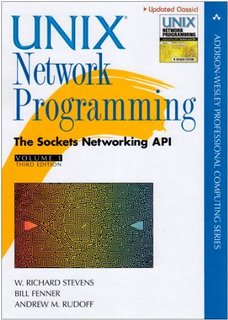Crafting a Comprehensive White Paper on Unix Network Programming
Introduction
This white paper delves into the intricacies of Unix network programming, focusing on the foundational concepts and practical applications of socket programming. We'll explore the fundamental building blocks, key protocols, and essential techniques for building robust and efficient network applications on Unix-like systems.
Key Concepts
- Sockets: Sockets serve as the fundamental abstraction for network communication. They provide a bidirectional communication channel between two processes, regardless of their physical location.
- Socket Types:
- Stream Sockets: Provide reliable, ordered, and connection-oriented communication.
- Datagram Sockets: Offer unreliable, connectionless communication.
- Socket Addresses:
- IP Addresses: Unique identifiers for devices on a network.
- Port Numbers: Specific endpoints on a device for a particular service.
- Socket Types:
- The Socket API:
- Socket Creation: socket() function
- Binding a Socket to an Address: bind() function
- Listening for Connections (Server): listen() function
- Accepting Connections (Server): accept() function
- Connecting to a Server (Client): connect() function
- Sending and Receiving Data: send() and recv() functions
- Closing a Socket: close() function
Network Protocols
- TCP/IP:
- TCP (Transmission Control Protocol): Provides reliable, ordered, and connection-oriented communication.
- IP (Internet Protocol): Handles packet routing and addressing.
- UDP (User Datagram Protocol): Offers unreliable, connectionless communication.
Practical Applications
- Client-Server Applications:
- File Transfer Protocols (FTP): Efficiently transfer files between systems.
- Web Servers (HTTP): Serve web content to clients.
- Email Servers (SMTP): Handle email transmission and delivery.
- Peer-to-Peer Applications:
- File Sharing (BitTorrent): Distribute files across multiple peers.
- Instant Messaging: Facilitate real-time communication between users.
- Network Services:
- DNS (Domain Name System): Resolves domain names to IP addresses.
- DHCP (Dynamic Host Configuration Protocol): Assigns IP addresses1 to devices.
Security Considerations
- Authentication: Verify the identity of users and processes.
- Authorization: Control access to resources and services.
- Encryption: Protect data confidentiality and integrity.
- Firewall Configuration: Restrict network traffic to authorized sources and destinations.
Advanced Topics
- Asynchronous I/O: Improve performance and scalability.
- Multithreading and Multiprocessing: Handle multiple connections concurrently.
- Network Security Protocols (SSL/TLS): Secure communication channels.
- High-Performance Networking: Optimize network performance for demanding applications.
References
- Unix Network Programming, Volume 1: The Sockets Networking API by W. Richard Stevens
- TCP/IP Illustrated, Volume 1: The Protocols by W. Richard Stevens
- Internetworking with TCP/IP, Volume 3: Client-Server Programming and Applications by Douglas E. Comer and David L. Stevens
- The Linux Programming Interface by Michael Kerrisk
Additional Tips for Creating a Comprehensive White Paper:
- Clear and Concise Writing: Use clear and concise language, avoiding technical jargon where possible.
- Well-Structured Content: Organize your content logically, with clear headings and subheadings.
- Visual Aids: Use diagrams and flowcharts to illustrate complex concepts.
- Code Examples: Include code snippets to demonstrate practical applications.
- Proofreading and Editing: Thoroughly proofread and edit your document to ensure accuracy and clarity.
Note: Contact ias-research.com for details.



